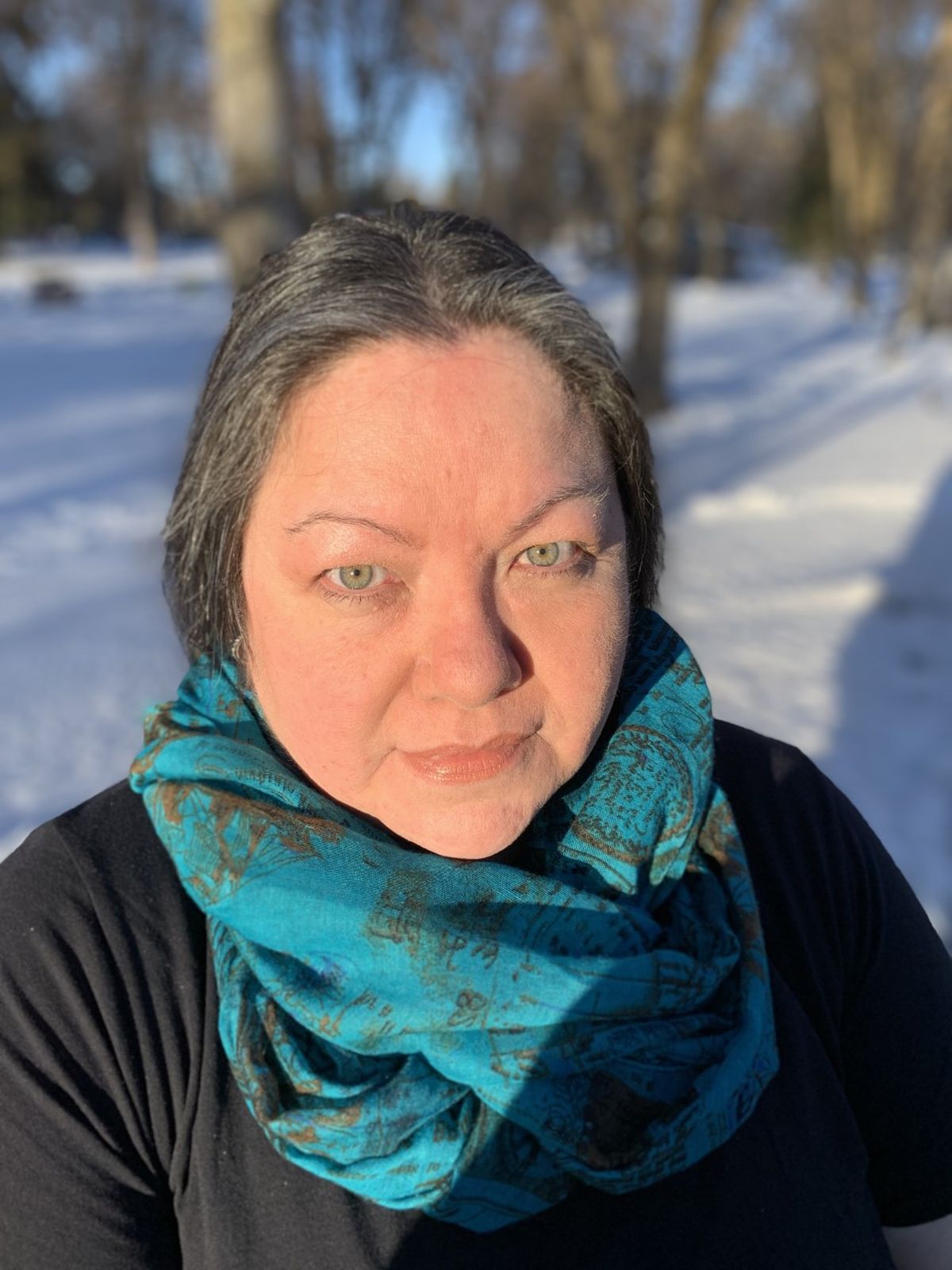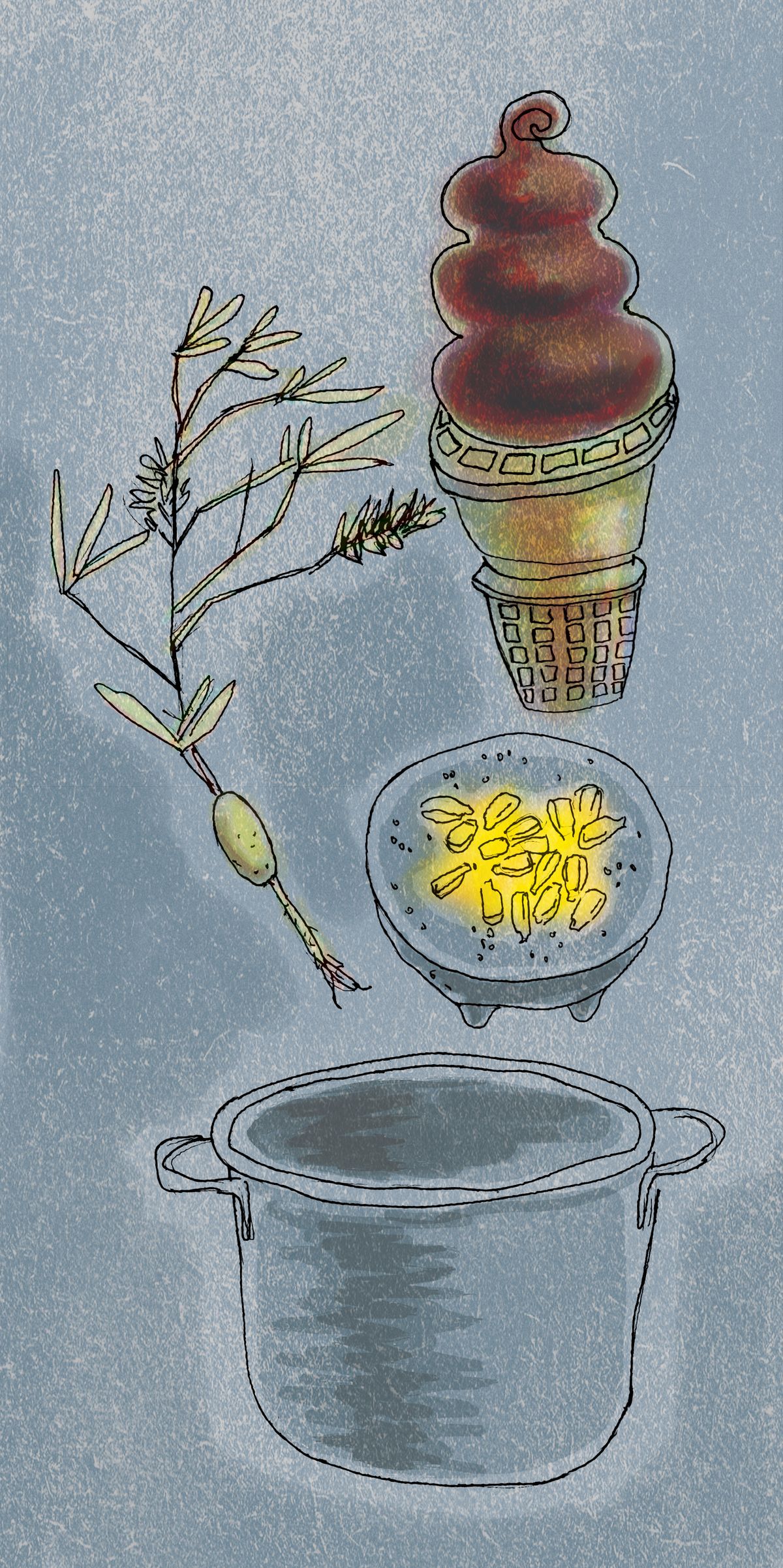Summer Stories: ‘Feast, Smudge, Snag: A Lakota Woman’s Search for Everything Across Kohl’s, Target and Barnes & Noble’ by Tiffany Midge
Author Tiffany Midge (Courtesy)
1. FeastAs a contemporary, urban Indigenous woman who visits the outlet shops and the suburban malls for all of her hunting and gathering needs, it’s important to always give a blessing of gratitude to the designers, manufacturers and salespeople who gave their lives so I could shop at this JC Penney and purchase this 70% off Pashmina scarf. And it’s important to pay respects to the Pashmina’s spirit by tearing the receipt from the clerk’s hand, stuffing it into my mouth and consuming its raw, potent and wild power.
2. SmudgeA few years ago, my office manager at work, Janet, handed me a copy of “Eat, Pray, Love.” “It changed my life!” she said breathlessly as if she’d just climbed 10 flights of stairs to Enlightenment. “Elizabeth Gilbert is a Shaman.”
Ouch. “Uh, OK,” I said. “I’ll check it out. Thanks.”
“Oh, you simply must. It was so spiritual. I just know you’d appreciate it,” Janet said.
Calm down, Janet. “Yeah? You know I’m not … you know, spiritual, per se, right?
“Well, I just thought because you – um …”
“… Love to read?”
Janet looked relieved to be off the hook. “Yes, because you love to read! And reading is such a contemplative, and like, spiritual activity.”
Could this interaction be any more awkward?
“Well, cool, thanks for the book.” And just like that, the topic is closed. I don’t have the time or energy to disabuse every non-Native person of their box of favorite cultural stereotypes. A few years ago, however, I would have dutifully climbed atop my designated lectern and delivered my standard TED Talk on contemporary, urban Indigenous people, but after a thousand times or more of being the Native version of Julia Sugarbaker, I’m done. I’m tired. Who has the bandwidth?
More often when these kinds of interactions occur – and trust me when I say they occur with alarming frequency, I could set my watch to them – I just let it slide. Or do my best to try and let it slide. Except for later, of course, the interaction will come flooding back, and I won’t be able to fall asleep because I will be replaying the details back in my head. The conversation I should have had, the things I should have said.
3. SnagThe Klickitat story tells of Loowit, a beautiful young woman who Creator transformed into a volcanic mountain because she couldn’t choose between the two brothers who fought over her. Their love triangle resulted in the creation of the Cascade Range we know of today: Mount St. Helens, or Loowit, and the warring brothers, Mount Adams, Pahto , and Mount Hood, Wy’east .
Like Loowit, my own romantic narrative, my origin story, is not without its faults, its eruptions, its fissures and, yes, its love triangles.
I learned about love from my mother and from her mother before her. Several Native women in my family married white men. All the way back to French fur trappers, so the joke goes. Auntie Rondelle married a man who was literally so white even other white people teased him for being so white. And when Rondelle went to the grocery store dragging her tow-headed Village of the Damned children through the aisles, people assumed she was the babysitter. So, if the Creator took issue with Native women marrying white men, or visa versa, it could explain any number of seismological calamities, any number of meteoric disasters.
When Rondelle was a teenager, before she got married to the whitest man in the history of the world, she claimed Mount St. Helens erupted the night she lost her virginity, the implication being that losing her virginity was a moral failing, and surely God was steamed about it.
Mom said not to pay any attention to her. “God doesn’t dole out punishments to people who are simply acting out their natural impulses.” Which doesn’t explain why Creator, the Great Spirit, was punitive and transformed Loowit and the two brothers into mountains. Or even why that origin story is so heteronormative, not to mention monogamist.
I always asked, “Why was Loowit expected to choose, anyway? Couldn’t she have them both?”
4. FeastI am descended from the Hunkpapa, of the Oceti Sakowin, but I grew up far from my reservation. I couldn’t tell you what medicines to gather for which ceremony with the exception of sweetgrass or sage; and I couldn’t tell you where timpsila – the prairie turnips – grow on those lands where my mother was born, and her parents before her, and so on, but, I like to think that one day, if I have a daughter of my own, that should she arouse a dormant volcano by losing her virginity like Auntie Rondelle, or incite a competition between two hot brothers for her affections, I will throw a feast in her honor. One day.
5. SmudgeI’ve been asking myself important questions lately, the hard questions, questions about lifestyle management and incorporating health wellness branding into my social media and daily routine. Questions like, how can I live my most authentic self? What is my life’s purpose? Am I a living manifestation of joy? Is “Live, Laugh, Love” the right manifesto to use as an inspirational centerpiece in my dining room?
6. SnagWhen people ask how Shayne and I met, I used to say it was at church, that our mutual requirement for piety and virtue had brought us together. I told people that Shayne passed me the offering basket where he’d just tendered travel-sized bottles of lotion. I told people that after the service, during the coffee and tea afterparty, Shayne came up to me while I was checking my messages and asked if I was texting with Jesus.
But the truth is I hardly ever went to church. The truth is I met Shayne at a Barnes & Noble author event. Literature is my church. The truth is it was during a rainstorm that seemed like a hurricane, and we were the only two in the audience. The author was Meskwaki or Cherokee or Shoshone or some combination thereof, and his book was about postcolonial grief and intergenerational trauma, a memoir about a memoir about a memoir.
During the Q&A, the other member of our two-person audience, Shayne, who I soon learned was from Tulalip, asked the author why so many Native American books are about trauma. He said he didn’t mean to trivialize Native history and atrocity, but at the same time it seemed like books by and about Native Americans were mostly about fatality.
“Is the publishing industry only interested in trauma porn? Only interested in tragedy and redemption stories?” Shayne asked. “What about intergenerational joy? Intergenerational creativity? Intergenerational humor?”
I had been thinking along the same lines – intergenerational sarcasm, intergenerational whimsy, intergenerational weirdness. Could I even claim being Native if I didn’t have a personal trauma narrative replete with a strong message of hope and redemption?
The Cree or Navajo or Kickapoo or Kiowa author weathered Shayne’s questions with a slick professionalism. Shayne seemed very earnest, even humble, not at all like he was trying to bust the guy’s chops, which I suspected he was. And even though there were only the three of us gathered at the corner end of the store, next to the maps and stationery, next to the remainder bins and wall calendars, I still felt a tension taking up the space, wanting to take root, but that might only have been the rainstorm pounding against the large panes of glass. It felt romantic and a little bit dangerous.
7. Feast“Uh-oh, Grandma’s making that soup again, try and be appreciative!” Grandma used to pack the ingredients in her suitcase and travel across three states by train just to make it for us when she visited. It was a winter stew she called washtucna, made from dried wild turnips – timpsila – dried bison or venison (really sawdusty) and dried corn. Reconstituted in the soup pot, the ingredients really left a lot to be desired. For my trashed palate, it tasted like rubber bands and toenails. Although today, I would give anything to have Grandma at the stove and making her soup. To sit with her in the kitchen listening to her talk about her life, laughing and teasing with us. But back then, as a teen, I had no idea. My identity as a Native had more to do with using every part of the sacred Dairy Queen Dipped Cone than timpsila – wild turnips.
8. SmudgeThoughts that keep me awake at night: You know, Janet, I feel it necessary to clarify something to you, and that is that “Shaman” is culturally appropriative, and in case you aren’t aware, using that term comes off as an epithet.
I mean it’s insulting to compare a white woman author to a “shaman.” Why? Well, it’s disrespectful to tribal people, particularly because you have no realistic notion or understanding of what a shaman actually is.
In addition, I feel it’s necessary to point out that your wrongful assumption that Natives somehow corner the market on spirituality – well, see, Janet, that’s a stereotype, it’s essentializing, and these kinds of assumptions are based on fatally false brush strokes, which contribute to the preconstructed, prefabricated, shrink-wrapped, Leanin’ Tree, fantasy Indian paint-by-number chicanery set that the white supremacist narrative insists on dishing out and chugging down.
Yeah. That’s what I would have said, if my official Indian Authority Card from the Office of Pissed Off Natives hadn’t expired.
Eventually, I did get around to reading the bestselling memoir “Eat, Pray, Love,” and later I saw the movie starring Julia Roberts, and while I couldn’t altogether relate to Elizabeth’s midlife crisis, I could relate to her search for wholeness and self-fulfillment. I might not have been a white woman of wealth and privilege residing in the upper echelons of East Coast society, but I knew a thing or two about a broken heart. I knew a thing or two about pasta.
9. SnagOn our first official date, Shayne took me to a photography exhibit of natural disasters. When we came upon the collection of Mount St. Helens photographs, I told him that I was conceived the night before it erupted. I told him that my mother had been a virgin, that she was only 15, that she didn’t know the man, my father, that he still remained a mystery. I confessed that my family lied to me most of my life, that my actual aunt raised me as her daughter.
“Is that TMI?” I asked.
“What’s TMI? Is that like a UTI?”
“Yes, Shayne, it’s exactly like a UTI. I’m infecting you with more information than you might care to know.”
“That’s impossible.”
“Why?”
“Because I want to know everything there is to know about you. And how you came to be in the world is pretty danged important.”
I felt a large balloon of expectation and longing collapse in my chest as if Shayne had just yanked the rip cord of my heart, and I was free-falling into his depths.

